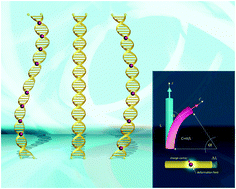Geometrically nonlinear deformation and the emergent behavior of polarons in soft matter
Abstract
Mechanical strain can alter the electronic structure of both bulk semiconductors as well as nanostructures such as quantum dots. This fact has been extensively researched and exploited for tailoring electronic properties. The strain mediated interaction between the charge carriers and the lattice is interpreted through the so-called deformation potential. In the case of soft materials or nanostructures, such as DNA, the deformation potential leads to the formation of polarons which largely determine the electronic characteristics of DNA and similar polymer entities. In addition, polarons are also speculated to be responsible for the mechanism of quantum actuation in carbon nanotubes. The deformation potential is usually taken to be a linear function of the lattice deformation (U ∼ αε) where α is the deformation potential “constant” that determines the coupling strength and ε is the mechanical strain. In this letter, by carefully accounting for nonlinear geometric deformation that has been hitherto ignored so far in this context, we show that the deformation potential constant is renormalized in a non-trivial manner and is hardly a constant. It varies spatially within the material and with the size of the material. This effect, while negligible for hard materials, is found to be important for soft materials and critically impacts the interpretation of quantities such as polaron size, binding energy, and accordingly, electronic behavior.


 Please wait while we load your content...
Please wait while we load your content...